Military boxes, pallets and containers
Part 1
The supply chain of modern armies is an incredibly complex structure consisting of many nodes. Any processing of goods in these nodes increases the time and cost of delivery, requires additional workers, facilities and equipment. If possible, dry bulk and bulk cargoes should be packed and represent a cargo unit. In addition, military logistics is different from civilian in that it requires more flexibility and is an “inaccurate” science. Thus, in the future, more extensive use of hardware and the development of automated supply systems is expected. One of the steps on this path was two simple, but very significant inventions - a pallet and a container.
Pallets
The desire to reduce the cost of transportation has led to the appearance in 1870-ies of corrugated cardboard packaging boxes to replace conventional wooden boxes. After spreading the experience of loading the piles out of the boxes with a forklift, in 1924, the first patent was obtained for a wooden structure of a sled pallet. In Russian, the definition of the word “pallet” clearly corresponds to this definition, but it is also possible to use the borrowed word “pallet”, which more often refers to a pallet with cargo.
During the Second World War, the US Navy officer Norman Cahner offered his own design of the 4's third-party pallet, which greatly improved the capabilities of the combination forklift-pallet-tying.
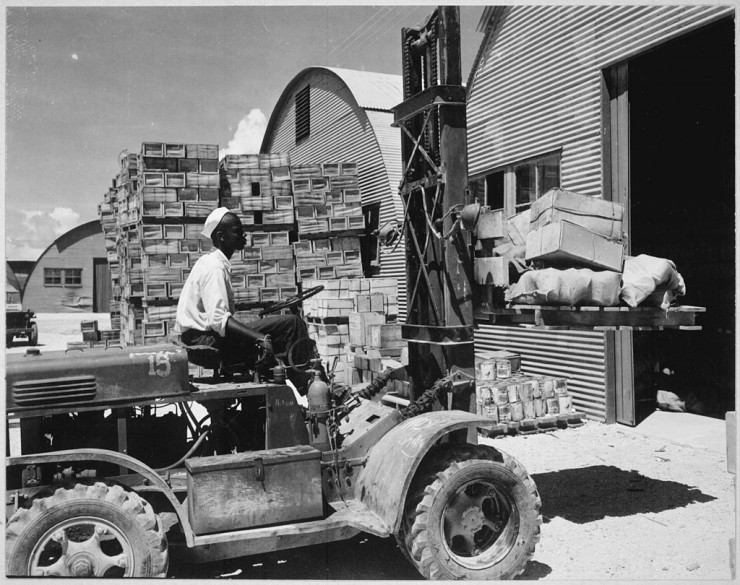
Seaman 1 class MD McShore controls the forklift, o.Guam, 8 June 1945.
With the development of the use of pallets, the development of standards for their size, design, capacity and other functions has become inevitable. A common type of so-called euro-pallets was adopted in 1961 year. The following dimensions and designations are defined:
EUR, EUR 1 - 800mm x 1200mm, corresponds to ISO1
EUR 2 - 1200mm x 1000mm, ISO2 compliant
EUR 3 - 1000mm x 1200mm,
EUR 6 - 800mm x 600mm, corresponds to ISO0.
ISO pallet standards are defined by ISO TC51 Technical Committee.
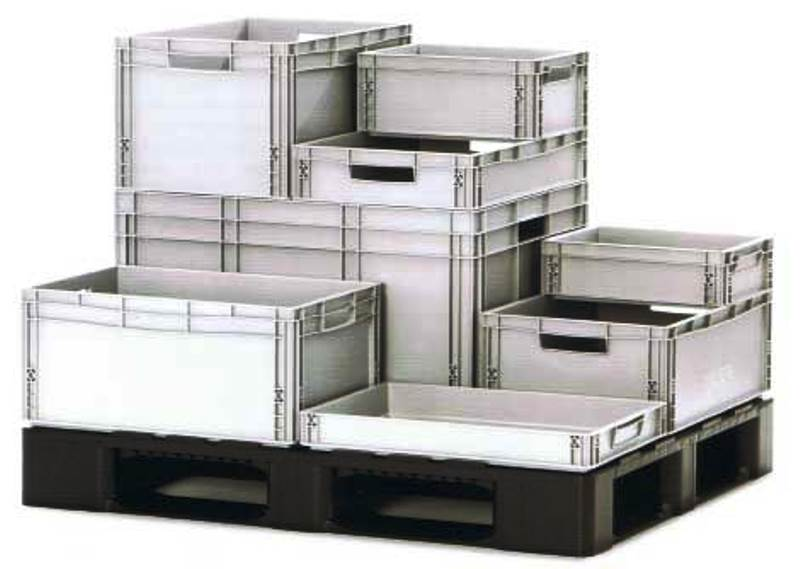
Boxes and boxes designed for compatibility with EUR pallets.
In the military field, pack sizes are described by the NATO standard STANAG 2828. The British army most often uses wooden pallets of 1000mmx1200mm with a payload of 1814kg or pallets with a reduced payload of 1000k for the transportation of military equipment. In fact, the size and capacity of pallets for different types of equipment, ammunition, fuel and lubricants may vary. The main requirement is the possibility of using a forklift. Requirements for packing, transportation and storage of a specific type of equipment are determined by the ULS-The Unit Load Specification. If the supplier works with the UK Department of Defense, the packaging is ULS certified.
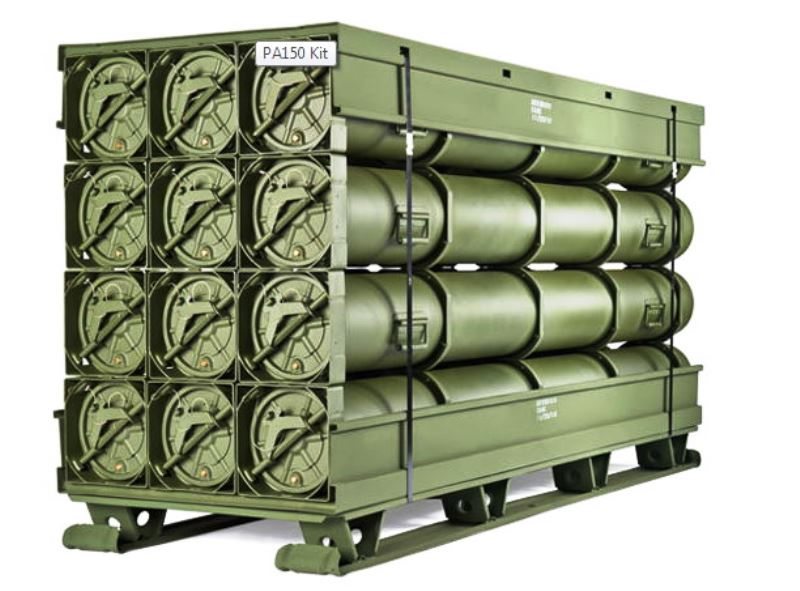
Packaging Hellfire Missiles
For additional fastening of cargo on pallets, nets and battens, metal and plastic ties are used. Shrink film has become common. NATO standards allow the use of other types of pallets, such as pallets-cells, boxes, and so-called. Eurocubes (IBC) for bulk and bulk cargoes.
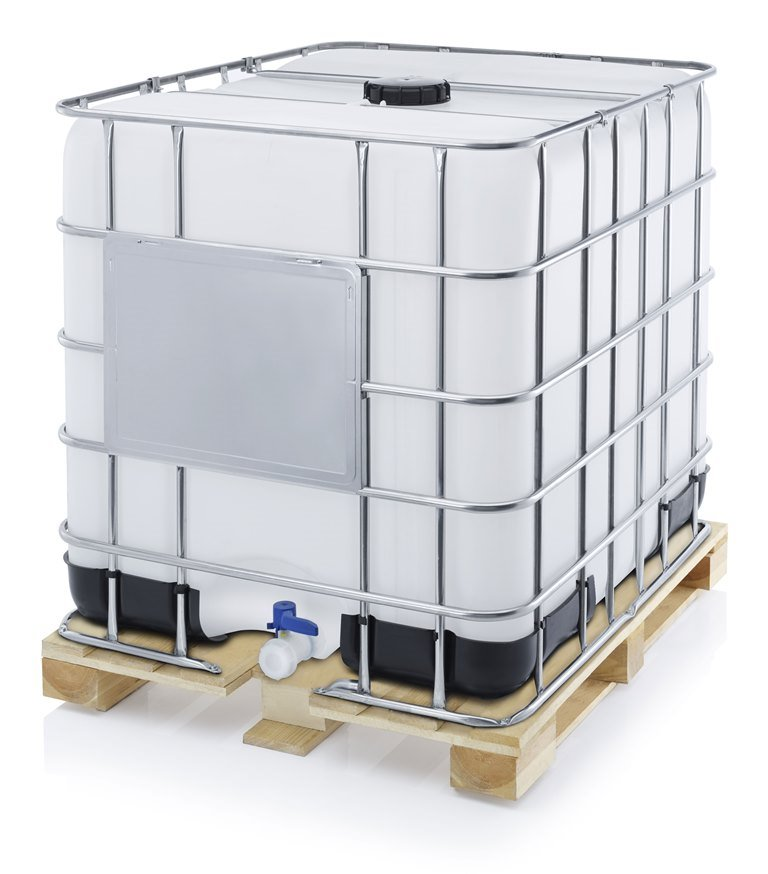
There is one important requirement to the different options for packing cargo on pallets - the possibility of using means of mechanization of loading and unloading.
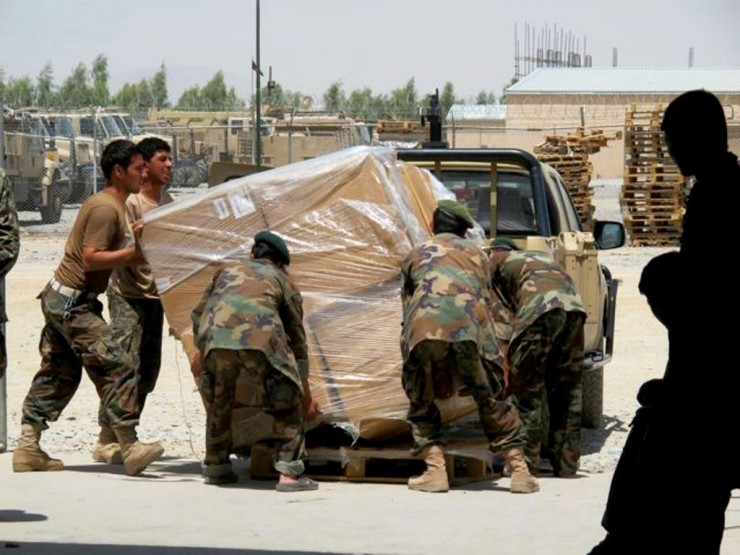
At the beginning of the 1970-s for the needs of the Royal Transport Corps (RCT) were developed the first trucks with an installed truck crane (or as they are called “thieves”) and various forklifts. Among loaders, a special place was taken by the Eager Beaver (Eager Beaver) - an airborne wheeled tractor with a load capacity of 4000 pounds.
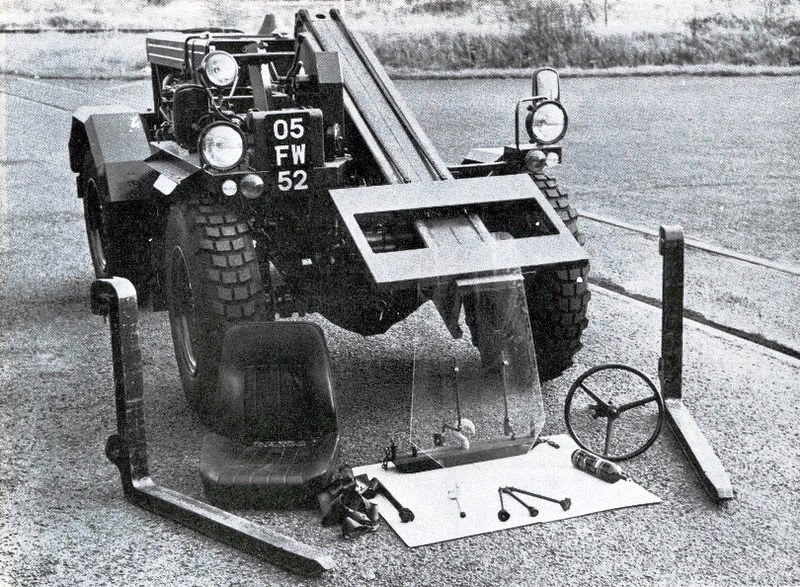
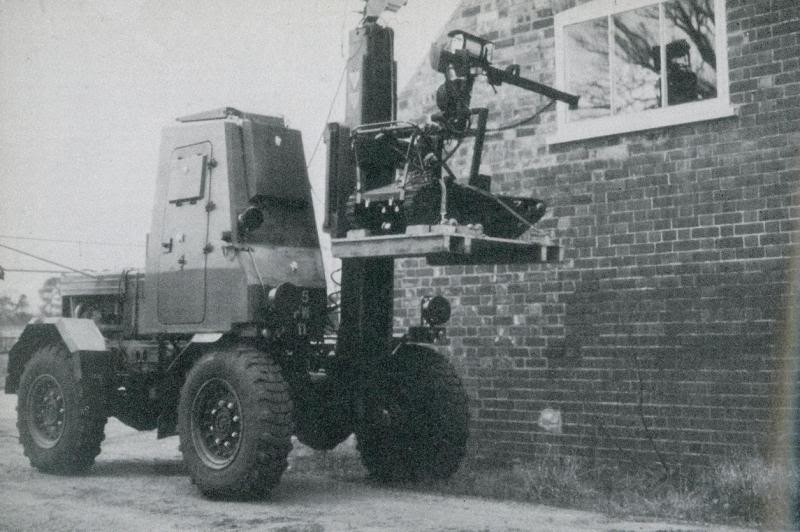
Eager Beaver Mk2 with armored cab and sapper robot in Northern Ireland.
The Eager Beaver loaders played a prominent role in supporting the actions of the British Army during the 1982 Falklands War of the year and were gradually replaced by more advanced telescopic designs.
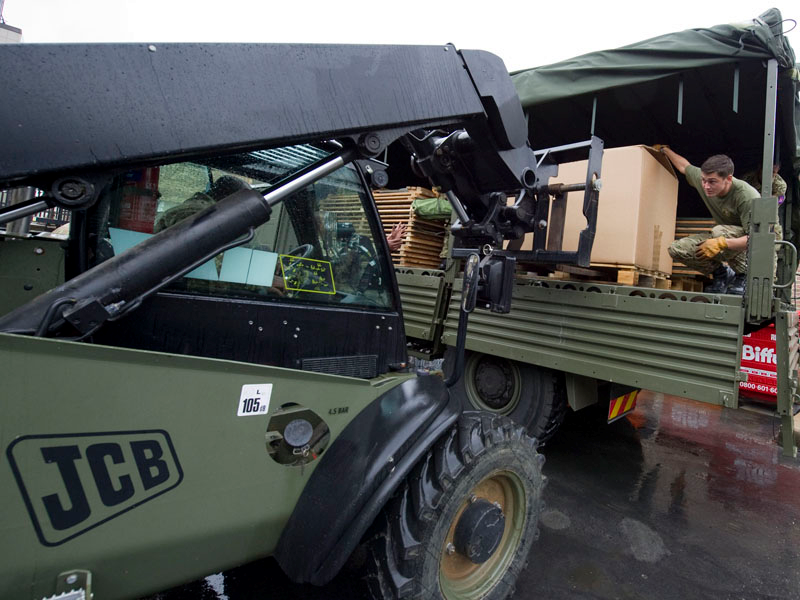
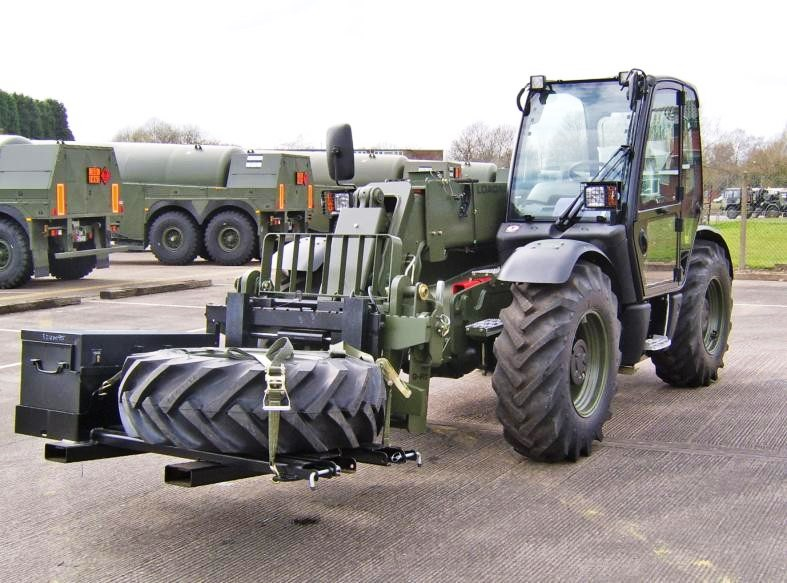
JCB Corporation (according to initials of the founder Joseph Cyril Bamford) produces two types of loaders for the transport case: JCB 524 / 5-50 (2400кг) and JCB 541-70 (4000кг).
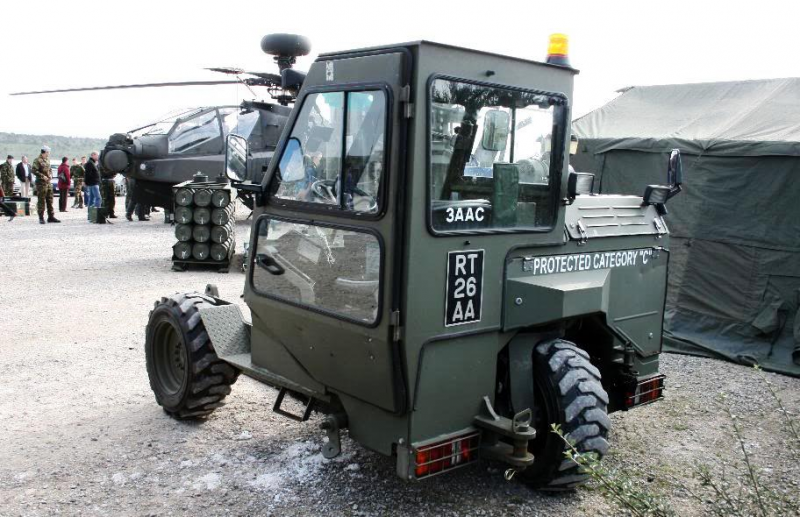
Before the transition to JCB products in the air force used loaders Moffett

Supacat ATMP cross-country vehicle and FLPT trailer loader
The use of pallets makes it possible to use a huge line of civilian mechanization tools for loading and unloading: forklifts, hand-held and electric pallet trucks, platforms and elevators.
Modifications and variations on pallets
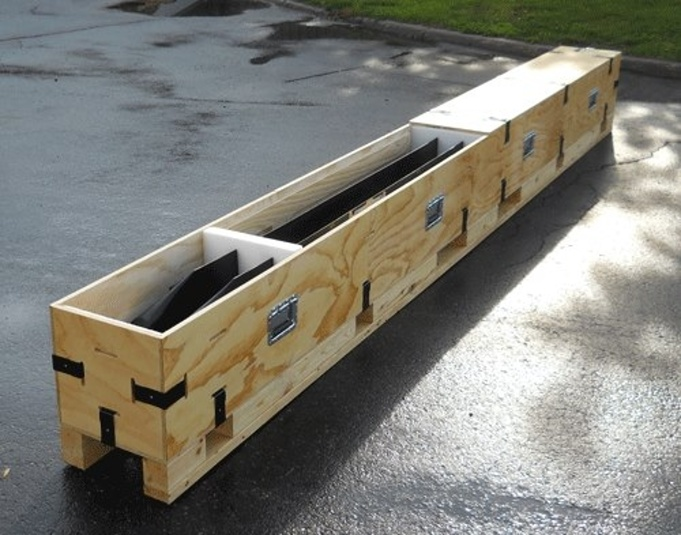
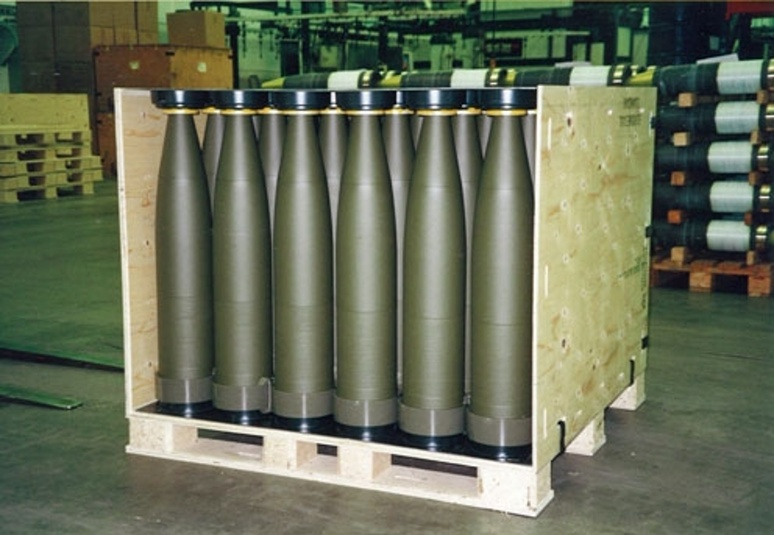
Helicopter blades in the package from the company CLIP-LOK - pallets combined with plywood partitions and metal clips
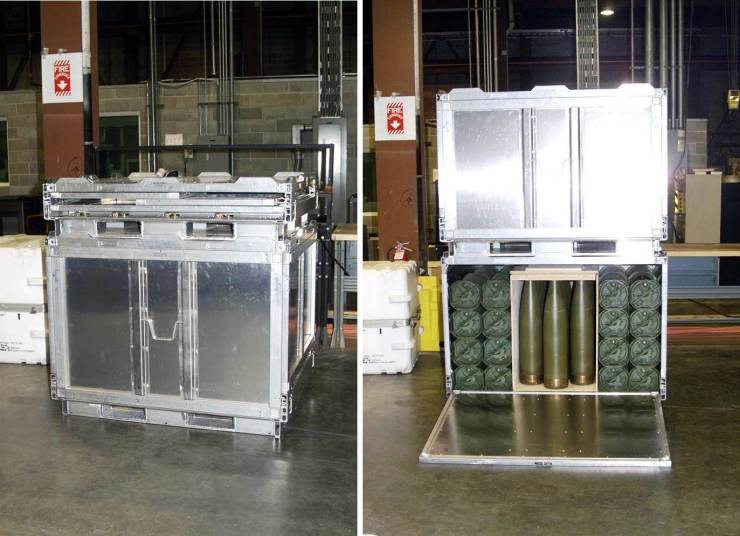
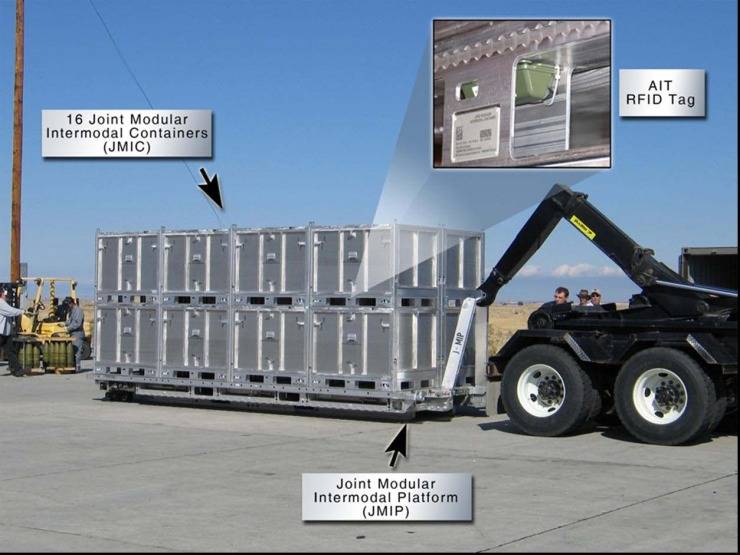
Perspective development of the Department of Standardization of the US DoD - a combination of intermodal pallet containers and platforms.
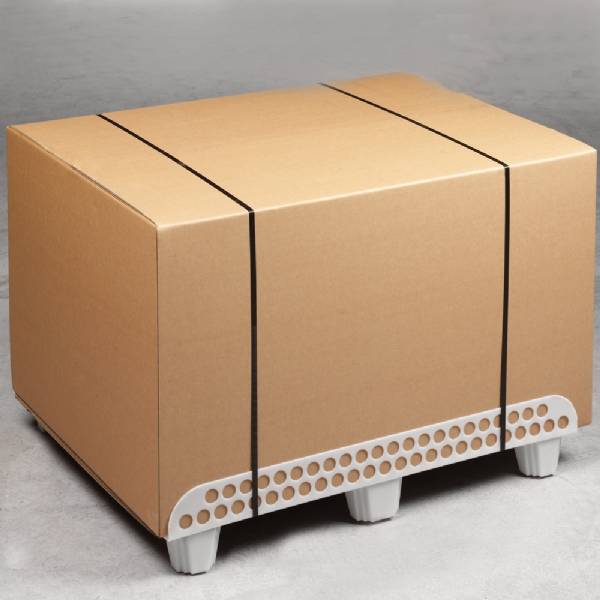
Optiledge is a solution from IKEA. A simple polypropylene stand allows you to turn any suitable-sized box into a pallet.
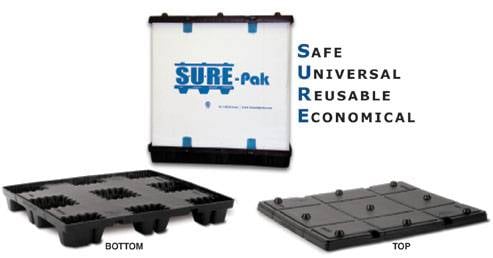
SURE-Pak, folding pallets are actively used by US troops in Afghanistan.
Information